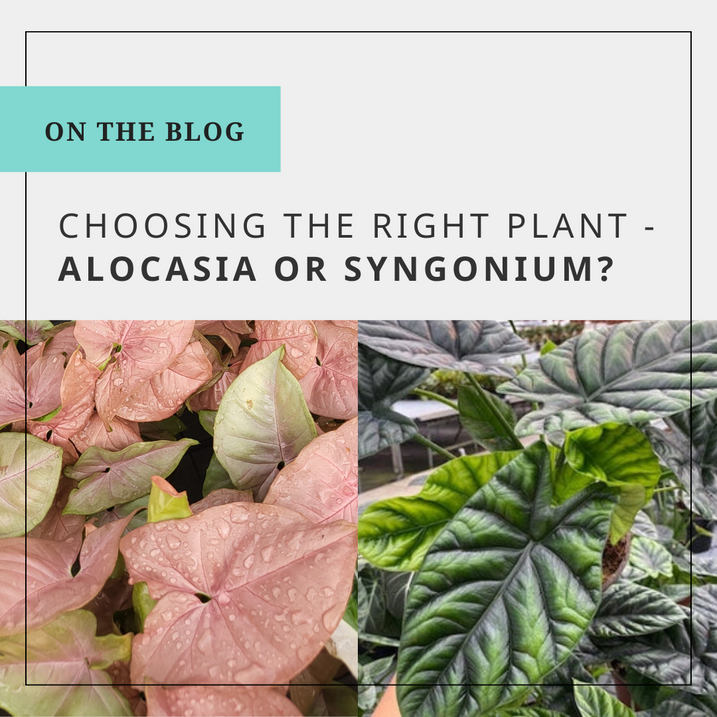
Alocasia or Syngonium?
Choosing the right plant can be a daunting task, especially if you're new to the world of indoor gardening. With so many different species and varieties to choose from, it can be hard to know where to begin. In this blog post, we'll be focusing on two popular indoor plants: Alocasia and Syngonium. We'll discuss the key differences between the two species, as well as what to look for when purchasing these plants.
Alocasia and Syngonium are both tropical plants that are well-suited to indoor environments. They are both prized for their unique foliage and ability to purify the air, making them popular choices for indoor gardening enthusiasts.
- Alocasia, also known as the elephant ear plant, is a genus of flowering plants that is native to tropical Asia and Eastern Australia. There are over 70 different species of Alocasia, each with its own unique leaf shape and color. Alocasia plants are typically larger than Syngoniums and can grow up to several feet tall. They also require more care and attention, as they are sensitive to overwatering and direct sunlight.

- Syngonium, on the other hand, is a genus of flowering plants that is native to tropical America. There are around 36 different species of Syngonium, each with its own unique leaf shape and color. Syngonium plants are smaller than Alocasia plants and typically grow up to a few feet tall. They are more forgiving than Alocasia plants when it comes to watering and sunlight, making them a great choice for beginner indoor gardeners.
Care tips:
It's also important to consider the plant's light and water requirements. Alocasia plants prefer bright, indirect sunlight and well-draining soil. They should be watered when the top inch of soil feels dry to the touch. Syngonium plants, on the other hand, can tolerate lower light levels and prefer consistently moist soil. They should be watered when the top inch of soil feels slightly moist.
Finally, consider the size of the plant and how it will fit into your space. Alocasia plants can grow quite large, so make sure you have enough room for them to thrive. Syngonium plants are smaller and more compact, making them a great choice for smaller spaces.
In conclusion, choosing the right indoor plant can be a rewarding experience, and both Alocasia and Syngonium are great choices for indoor gardening. When purchasing these plants, be sure to choose a healthy specimen and consider the plant's light and water requirements. With a little bit of care and attention, your Alocasia or Syngonium plant will thrive and add a touch of tropical beauty to your indoor space.








